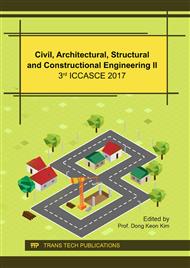p.275
p.281
p.286
p.291
p.296
p.302
p.308
p.313
p.318
Finite Element Analysis for the Roll Forming Process of Rib
Abstract:
Roll forming is a continuous profile production process to form sheet metal progressively into the desired shape with closer tolerances. The process offers several advantages such as complex geometrical shapes, high strength, dimensional accuracy, closer tolerances, better quality and consistency, high production rate, improved conformity, and good surface finish. Several parts of automobile body are produced with this process. Nowadays roll forming technology draws more attentions than before in the automotive industry. In this paper, A Finite Element Method applied to study von mises stress, equivalent plastic strain, thickness, plastic strain, longitudinal strain and spring back of the metal sheet with ribs formed by roll forming process. The thickness variation was almost -6.144%.
Info:
Periodical:
Pages:
302-307
Citation:
Online since:
February 2018
Authors:
Price:
Сopyright:
© 2018 Trans Tech Publications Ltd. All Rights Reserved
Share:
Citation:


